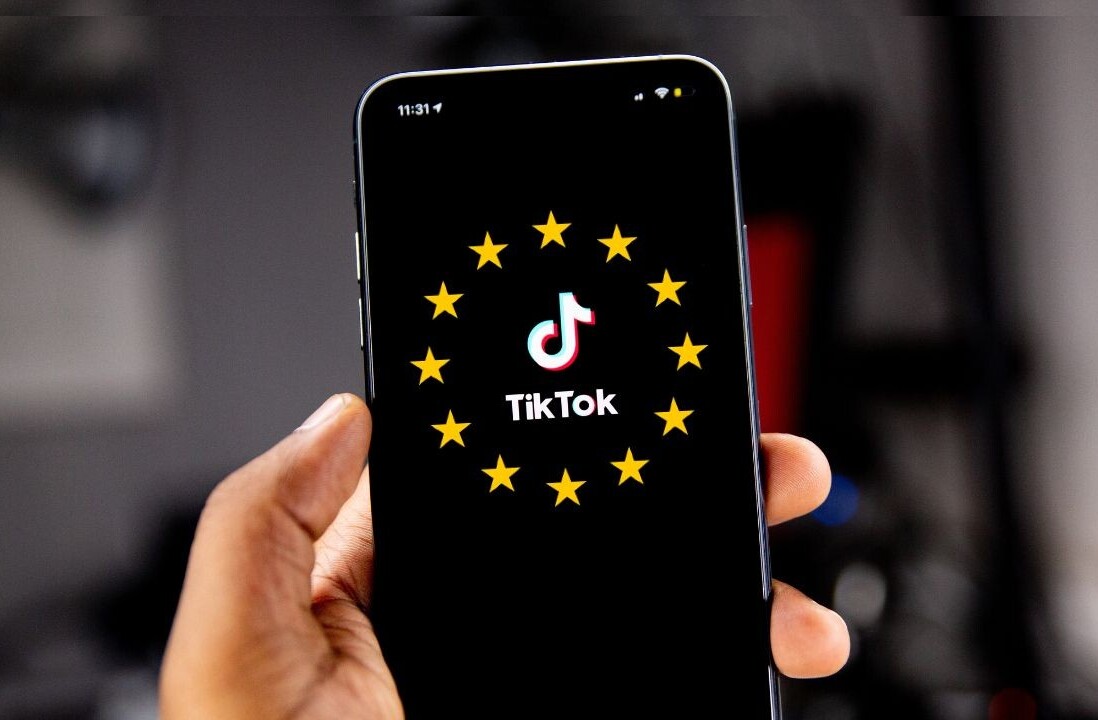

- Image by Getty Images via Daylife
In the next couple of weeks I’m going to explore two future-looking subjects:
- The Internet connected home – Smarthomes of tomorrow
- Personal Area Networks
Because I write extensively about communications technologies, I thought it wise to set the stage and set some parameters around what the industry calls unified communications. Realtimepublishers is one of our publishers, and Sheryl and I write extensively about communications and social media. Up until the end of 2008 I was the author and resident editor for the Realtime Unified Communications Community. We contributed a number of articles to the digital library there. In one eJournal piece for the community, I explained unified communications this way:
Unified Communications – A Broad Definition
Unified communications is an interesting phrase that’s come into widespread use in the past year or two. Many companies have made efforts to brand it as their own, but it’s really a mindset tied to the journey of network convergence.When we’re connected effectively, we’re more productive. Many working professionals are also more creative. With easy access to the tools we use to perform, our work is simpler. We’re able to focus on the work they need to do. We perform at a higher level. Just as companies focus on their core competencies, we as people perform better when we put all of our energy into our primary work objectives
One of the biggest drivers of this increased productivity in the past ten years has been what we call convergence. Convergence is another one of those vague buzzwords that means many things to many people, but there have been some clear and distinct phases
Phase 1 – Voice and Data Converge on the Wire
Convergence really took hold as a concept in the late nineties. IP became the most widely accepted transport technology for data traffic. Around the same time Voice over IP (VoIP) came on the scene as potentially disruptive technology for telecommunications.Prior to this, most large companies often managed multiple networks – one for voice and another for data. In many cases, these networks were supported by different administrative and operations groups.
Integration of voice and data onto a single wired circuit infrastructure helped many companies reduce costs and improve the bottom line. The convergence of network technologies brought efficiency gains in many different business areas.
Phase 2 – IP Takes Center Stage as the Convergence Protocol
The convergence of the physical network onto a single circuit was the start of something that’s still in motion. Voice over IP (VoIP) provided yet another catalyst for change. It was ballyhooed as the end of telecommunications as we knew it and the signal that the legacy telephone companies would be out of business.VoIP has not matured in the way those wild prognostications foretold, but it has become the stable foundation for telecommunications infrastructure. VoIP proved to be an enabling technology that has changed our way of thinking about voice. VoIP pointed the way to voice as simply another service of the network.
Phase 3 – Unified Communications
This convergence of voice and data networks has continued around the globe for the past several years. Today there are many networks that still haven’t fully converged. The process continues, and for many companies, the end of the road is nowhere in sight.Convergence became the term used to describe the integration of data, voice and video onto one unified network. These network services used to all use separate networks. Today they share the resources of the corporate network and the Internet.
In the past two years, the word convergence has given way to the phrase unified communications. For most people, unified communications simply means the fully converged network, supporting data, voice and video.
That’s unified communications of today, but the journey doesn’t end there. There are mission-critical business applications that will integrate more tightly through Communications Enhanced business Processes (CEBP). These include:
- Enterprise Resource Management (ERP)
- Customer Relationship Management (CRM)
- Supply Chain Management (SCM)
- Sales Force Automation (SFA)
- Human Resource Management (HRM)
There will always be room to further integrate for efficiency. One key added area thatís seeing a lot of current improvement is integrating people with voice recognition technology. The user interface will always be a key component of how we enhance the way people use computerized resources.
In order to build a framework to talk about the future of communications technologies, I’d like to share a variation of a piece Sheryl and I wrote at the end of 2008 as a look to what lies ahead. It does a nice job of setting the stage for some posts I’ll be writing here in the coming weeks.
What’s Ahead for Unified Communications?
By Ken Camp and Sheryl Breuker
We’ll touch on a number of different technology areas that are rapidly evolving to change how we interact with computerized systems (or network resources) and with one another.
- Mobility provides access any time
- Ubiquity provides access anywhere
Mobility and ubiquity are two critical factors in the unified communications advances on our horizon. As we’ll see, they’re fundamental building blocks of the next generation of unified communications.
Unified Communications In a Nutshell
First it’s important to understand what we really mean today by unified communications. There are really three kinds of communications involved:
- Person to Person communications: We really mean realtime interactive communications here, like voice and video. But we can’t discount instant messaging (IM) and other text messaging tools either. Email is brokered through servers in an asynchronous way that really makes it non-realtime.
- Person to Machine communications: This might consist of surfing the web, querying the corporate inventory system, or selecting a video program to view.
- Machine to Machine communications: This stream of communications is the entire background processing taking place between databases and servers. It may include call setup and teardown. It’s made up of streaming XML SOAP for web services, batch file transfers and machine transactions.
Unified communications is not telephony. It’s more than telephony. Telephony is simply one component. It’s interacting with a person or network resource anywhere on the corporate network, our home network, the PSTN or the Internet.
Changing the Shape of Computing
We’ve pointed out time and again how important mobility is in today’s working world. The shape our tools take has been undergoing change for some time. The form factor we work with today is quite different from the early days of computing and cellular communications. We’ve seen computers shrink from desktop to laptop to notebook to what is now being called a netbook. At the same time, we’ve seen smartphones incorporate more and more computing features and a new segment of handheld tablet devices filling the gaps in between.
Smartphones that were initially built to compete with the iPod as an MP3 player incorporated wireless broadband and have become, for many, the primary tools of business too.

Figure 1: The Coming Generation of Mobile Devices
In Figure 1 we can see an assortment of the most popular current devices including:
- HP Mini 1000
- ASUS 900 eee PC
- Nokia N97 (just released)
- Nokia N810 Internet Tablet
- Apple iPhone
- Blackberry Bold
For many mobile professionals today, these tools make up the most powerful communications arsenal ever created.
The desktop computer has become something from the past. The authors of this article haven’t owned a desktop computer in many years. Many large enterprises no longer purchase desktop machines, opting for notebooks that enable telecommuting and portability with ease. For some businesses, the mobile phone power of a Blackberry, iPhone or other handheld device has eliminated the need for even a notebook computer.
The shape of computing has changed. The desktop box or mini-tower alongside the desk is rarely the first choice for users buying a new communications system today.
Just as computers have changed in shape and size, mobile telephones have shrunk. What were once bulky devices in a shoulder bag became handhelds. Today they’re miniscule electronics that fit in a shirt pocket or purse. Wristwatch mobile phones, while not common, do exist.
Unified communications delivers the convergence point where these devices will all integrate into one single portable tool that performs a myriad of functions.
Mobility and Ubiquity
We’ve seen how the tools we use are changing our mobility in one way ñ the portability of our devices. There’s another factor that dramatically impacts the unified communications evolution ñ ubiquitous service. We touched on this in the first part of this eJournal.
The cornucopia of unified communications network technologies is growing. Today we have a variety of voice and wireless broadband data services available from an array of service providers. WiFi and WiMax continue to spread, providing another communications transport tool through home and business networks.
Being able to access network resources for voice and data everywhere isn’t anywhere near ubiquitous on a global scale today. It’s significantly lacking in rural areas and nations that are struggling. Yet in all major business centers, where people live and work, these services are readily available. They’re very nearly universally available today for a price. What will change are the pricing models.
We’ll see major reductions in airtime minute and megabyte cost as our unified communications services grow and society adopts these emerging communications methods. The commercial carriers have struggled for years with the dilemma of appropriate billing for emerging services, but they’re beginning to see the light and find new value propositions in reduced costs for services.
A Vision of Unified Communications to Come
First we must accept that our life has changed as we’ve moved into the information age. In an earlier piece we discussed the idea of casual computing. Here’s an excerpt:
“Mobile computing implies being always connected, but being actively engaged and connected doesn’t have to mean that we are always available for work. The integration afforded by the convergence of data, voice and video services on the network with enterprise business or web services applications brings powerful tools to the hands of everyone. As work life and personal life blend, our social network overlaps or dovetails with our personal network in many ways. Just as our networks blend together, our communications styles blend into a more casual style of using the tools at hand regardless of our setting.
Casual computing for work doesn’t mean being unprofessional or inattentive to our work. Rather, the structure of our work day becomes less regimented as we casually work during times that might have been ‘down‘ periods in our day in earlier times. The time clock, a centerpiece of the industrial age, when the manufacturing sector had to manage around-the-clock productivity, becomes an anachronism. In the information age of today, availability and access to resources is one of the foundations of how people communicate for both business and personal needs.”
Our networks, whether business or personal, converge in our unified communications tools. Social media networking has become and important part of driving mobility advances and our work/life style changes.
The full-evolved unified communications network of the future is almost entirely made up of technologies that exist and are in widespread use. Today we hear the words that describe what’s coming:- Communications Enhanced Business Process (CEBP), Software Oriented Architecture (SOA), Software as a Service (SaaS), and the more gritty Internet idea of a mashup. They all mean one thing:- convergence. So let’s consider what real and complete convergence might bring,
We should assume that at some point in the foreseeable future, we’ll have a primary communications device, probably in roughly a cell phone in form factor. We may or may not have a single telephone number for life. It’s more likely in the first few generations that the devices will support multiple telephone numbers on a single handheld. This device will support a myriad of networking technologies, user definable by device and carrier services used:— voice, broadband wireless data, WiFi, WiMax, Bluetooth, and likely something based on RFID.
We will always use a multitude of technologies and devices. It’s likely to expect something like Bluetooth technology to provide a constantly morphing Personal Area Network (PAN) that automatically joins all the resources within range. What resources, you ask. Here are some:
- Keyboards
- Display units
- Cameras
- Printers
- Automobiles
- Our workplace
- Our home
- Airplane resources for travelers
Because the network resources can automatically connect, new service convergences that are possible, but impractical today — will become routine. Here are two examples:
1: The Future Telephone Call
Since the workday has changed and no longer last simply from 9 to 5, people work differently. They work at home, in the car, in the office, in a waiting room. Telephone calls will begin to follow us wherever we go.
We might easily make a telephone call in the early morning from our device using our business office number, but paired to some communications panel in our home office. While we’re getting ready to work, the call can transfer to our headset. When we leave to drive to work, the call can pass from home to automobile. When we arrive at the office, the call might transfer from the cellular carrier to the corporate WiFi network, and eventually wind up on our computerized workstation in a cubicle.
2: The Future Video Call
We’re seeing a tremendous upsurge in the use of persona video calling. In the future of network-connected homes, we also need to consider both an entertainment wall that can be configured into a number of virtual screens, and video cameras in every room of the house (for both video calling and security).
Since our Personal Area Network inside our home will recognize who we are and where in the house we are (through Bluetooth and RFID-like technologies), the system can deliver a video call in any room we’re in. We can walk from room to room and the video can easily transfer from one camera to another as a new virtual screen lights up on the wall of the room we’re entering. We’ll be able to predefine rooms we want to not transmit video images from, for privacy.
There are other significant areas of change ahead as well. Perhaps one of the most significant impacts will be the change in user interface. In past months the authors have written about Jott (www.jott.com), SpinVox (www.spinvox.com) and Twitterfone (www.twitterfone.com) as tools that integrate the human voice into interacting with systems. As speech recognition tools and speech-to-text or text-to-speech conversion tools advance, we can expect to see the Graphical User Interface (GUI) give way to the Voice User Interface (VUI). Today the flick of a finger interface on the Apple iPhone seems a dazzling advance, but convergence is also bringing us closer to interacting with network resources simply by speaking. That voice interface will impact our home and business life. It will be just as easy to tell a corporate inventory control system “check inventory for widget #1327” as it will to tell our home communications resources to “call Mom“.
Summary
Protocols and engineering specs are something that don’t sell systems and don’t interest end users or consumers. What matters is how we can use the tools and what they can do for us. The legacy of telephony and the Public Switched Telephone Network (PSTN) coupled with advances in Internet-based technologies have placed us at the vortex of change. We’re about to see unified communications completely reinvent the way people talk to people and machines, and how machines talk to other machines. Unified communications services will be as common as water or electricity in the next few years. They’ll be something we expect, and get, as easily as turning on a switch or a tap.
Get the TNW newsletter
Get the most important tech news in your inbox each week.

![Reblog this post [with Zemanta]](https://img.zemanta.com/reblog_e.png?x-id=d91ccf24-d0d8-4864-ad29-6fe865d726c8)




